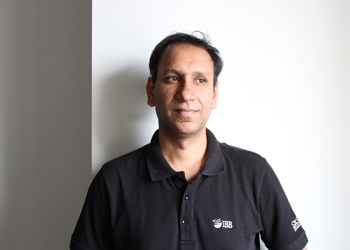Approaching the Indian SME market – Right mix of Information, Strategy, Problem solving, and Pricing
2017-07-24
The Small and Medium Enterprises (SME) sector in India has grown leaps and bounds over the years owing to rapid infrastructural development, and a conducive business environment that is fostering the growth of new & promising ventures across the country. Additionally, advancement in the field of technology has proven to be a boon for the SME industry as it is playing a key role in upgrading business operations, and helping small businesses significantly augment their reach across a wider spectrum.
Apart from being one of the fastest growing markets in India, the SME sector’s contribution to the nation’s GDP is also quite encouraging. According to a report by CII, the MSME / SME sector in India has more than 51.1 million units across the country, and contributes up to 7 per cent to the Indian manufacturing GDP. It also contributes around 37 per cent to India’s overall manufacturing output, and 31 per cent of the GDP from service activities. The CII report further stated that the Indian SME market is playing a key role in improving India’s economic scenario, and is touted to be the backbone of the nation’s economic structure. It is also one of the most prominent industries in the country that have helped it withstand the negative effects of several economic meltdowns in the world.
Going by such encouraging facts, it is quite evident that the SME market in India holds immense potential for growth. However, to fully understand the overall scenario within this space, let us explore the various aspects that play a key role in determining the approach of SMEs.
Information: The right information on the Indian SME market can set the tone for future endeavors for any new or existing stakeholder within this segment. Let us consider the following facts that can help stakeholders fully recognize the growth potential of SMEs:
What Indian SMEs really want – There are some business models internationally that have worked really well, but taking inspiration from them can take us only so far. Not all international business models are suitable for Indian SMEs. The biggest reasons for this lies in the fact that the socio-economic situation of each country differs from another, and thus, the way business is conducted also varies.
Understand and play along with SME ecosystem – The SME ecosystem in India has transformed over the years, and is currently one of most lucrative markets in terms of investment as well as number of enterprises. Following almost half a century of collective effort by both government and corporate growth enablers to improve India’s small businesses, the Indian SME sector has now become a force to be reckoned with, and shows no signs of slowing down. Therefore, it is important to understand and determine a course of action based on the current SME scenario in the country in order to reap positive results in the long run. Innovating for specific problems that SMEs face would be a good place to start. Demonetization and GST roll-out have brought out some interesting problem statements. Providing reliable customer support is also important to effectively aide SMEs in India.
Strategy: Developing an all-inclusive strategy is one of the key factors that can help in building a robust SME ecosystem in India. In the current SME market in India, effective distribution has been projected as one of the most important factors that can help Indian SMEs grow. Companies today need to have a robust strategy for Direct and Indirect reach to SMBs.
Effective Distribution – These days, many SMEs have begun to opt for multi-channel distribution strategies, and are developing effective plans to improve distribution at various stages of company/product development. In fact, by utilizing the power of the Internet, many Indian SMEs are now able to maximize their presence via dedicated marketing platforms & distribution networks across both online and offline channels to accomplish greater business growth within a short span of time. Given the vast number of SMEs in India, there is a pressing need for distribution models to be more tech-intensive, and not entirely dependent on human effort.
What’s more, some location-based online & offline discovery platforms have begun to help smaller businesses get discovered locally by increasing their online visibility, and subsequently enable business growth. They also facilitate discovery of local inventory – be it for walk-ins or to purchase online from other local store website(s). Organic discovery and generating inbound leads is as important for the SaaS provider as it is for the SMEs they cater to.
Problem solving: To bring more efficiency within the overall India’s SME market, it is advisable to recognize the problem and resolve it first. Picking the problem statement correctly is the hard part, building the technology behind it becomes fairly easy. Each innovation must be cognizant to grass-root level problems. Nowadays, there are several technological solutions to any kind of problem faced by SMEs in India. However, the key is to find the source of the primary issue, and formulate policies that can help in alleviating current as well as future problems.
Pricing: Most important pricing strategy is not to make the SaaS product as inexpensive as possible. SMEs accept SaaS products when they perceive them as an investment with a measurable RoI. Therefore, a Saas product must never be underpriced or overpriced. SMEs also face a crunch in working capital from time to time. Therefore, it is advisable to opt for a multi-year pricing structure to make it easier for small businesses to flourish without any financial burden. Moreover, while most market players tend to approach SMEs with facts & figures in an attempt to figure out its requirements, they fail to comprehend that such businesses initially focus on improving small details rather than concentrate on big data. Thus, to effectively approach SMEs, it is important to make sure that the help extended towards such firms is effectively demonstrated, and have the ability to bear positive outcomes in future.
Going by aforementioned facts, it is evident that with the right mix of information, strategy, problem solving, and pricing can make it easier for stakeholders to approach and develop the SME market further.
Mr. Nitin Jain
Co-founder and COO, NowFloats
See What’s Next in Tech With the Fast Forward Newsletter
Tweets From @varindiamag
Nothing to see here - yet
When they Tweet, their Tweets will show up here.





























